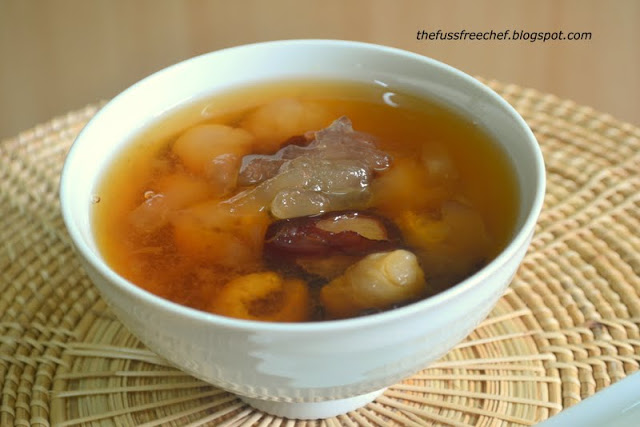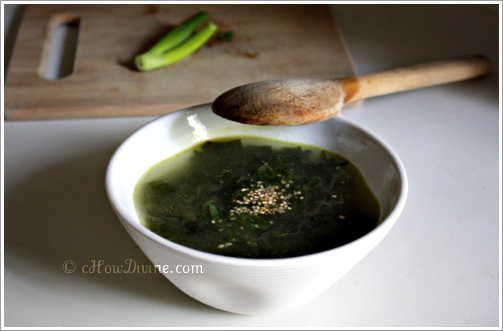Seaweed: 2014 SuperFood

Image by buzzle.com
If the extent of your seaweed consumption reaches no further than sushi rolls, you're selling your health short. Don't walk past the bags of seaweed at the grocery store any longer. You should eat as many superfoods in your diet as possible and dried seaweed is no exception.
But what is a superfood? A superfood is a nutrient-packed food that is particularly good for your well-being and overall health. With so many health benefits already known and more being discovered all the time, seaweed fits the bill perfectly. Seaweed is the superfood of choice in 2014. If you have made weight loss and health resolutions for 2014 then why not include seaweed part of your diet?
More...
Types of Seaweed
Before you go running out to buy seaweed willy-nilly, it may be helpful to familiarize yourself with the choices on offer: most grocery stores in the United States carry brown, red and green seaweed. While all varieties offer some benefits, brown is the most researched, most palatable and the most commonly consumed. If you've never tried seaweed, brown is the ideal start. Popular Brown seaweed that is available in stores is called KOMBU.
Red seaweed -- you probably know this better as NORI, which is what's used in sushi -- is the second most common and second most researched type of seaweed. It isn't actually bright red, so just look for “red seaweed” on the package.

Image by thesaladgirl.com
Green seaweed isn't as extensively researched and tends to have a slightly bitter and less-palatable flavor in comparison to other types. However the WAKAME green seaweed is a popular choice in seaweed salad and seaweed soup like the Miyeok Guk.
Seaweed Nutrition
Despite the wide variety, the basic nutrient content is similar between all three types of seaweed. A serving size is approximately 1 ounce and contains 86 calories, 2 grams of protein, 22 grams of carbohydrates, 2 grams of fiber and less than 0.1 grams of fat. Seaweed also contains notable amounts of vitamin A, vitamin C, calcium, iron, zinc and amino acids. But seaweed is far from unique in supplying these nutrients, so what’s the big deal? Seaweed also contains iodine, a nutrient that isn't found in many foods and one that most American diets are severely lacking.
Health Benefits of Seaweed
The primary benefit of seaweed are thanks to its iodine content. Consuming iodine helps keep your thyroid, which is responsible for regulating hormones, healthy. Your thyroid can cause weakness, fatigue, high cholesterol and weight gain when it is out of balance. If thyroid problems go untreated for long periods of time, they can even cause memory impairment and heart palpitations. These potential problems are the reason why salt manufacturers began adding iodine to salt, but you don't need to slather your food in salt to get that precious dose iodine if you're eating seaweed.

Iodine deficiency can be quite hard to spot, unfortunately. Common signs include fatigue, compromised immune system, depression, difficulty losing weight and mood swings. These are all signs of hypothyroidism. In short, if you have an iodine deficiency, adding seaweed to your diet could take you from commonly feeling down, tired and fat to feeling happy and energized while losing weight.
You don't even need tons of seaweed to fix an iodine deficiency - a single serving can have as much as 50 times the minimum daily intake for iodine.
Seaweed is also known for its fat-busting qualities. It tends to aid the body in fat absorption, according to a recent scientific study.
Seaweed has been shown to do more than fix an iodine deficiency: research has found this superfood helps regulate hormone levels and reduce the risk of breast cancer in women. The high seaweed consumption in Japan is believed to be at the heart of their low incidence of breast cancer. Ladies can also experience reduced PMS symptoms by adding seaweed to their diet.
Other benefits of seaweed include relief from inflammation, arthritic symptoms, asthma and celiac disease symptoms.
Adding Seaweed to Your Diet
If meals focused on seaweed seem like too much, fret not – seaweed is easy to add to your usual meals. For breakfast, you could mix a spoonful of shredded seaweed into scrambled eggs - or add seaweed to smoothies if you prefer grab-and-go breakfasts. If you don’t care for the flavor of seaweed, it nearly disappears when added to fruit smoothies. Strips of seaweed are also excellent toppings for soups, salads, sandwiches, wraps and other savory dishes. Alternately, try a simple seaweed salad. On days when you don't have time to cook, though, just grab a sheet of seaweed and eat it plain or dipped in balsamic vinegar, wasabi or another strongly-flavored condiment.

When you add seaweed to your diet, it’s important to limit yourself. This tasty green superfood may offer many benefits, but consuming more than a 1-ounce serving each day could result in an overdose of iodine and potassium. Getting carried away eating seaweed is okay every now and then, but you should generally keep it to one or two meals containing seaweed each day.
- Top 5 Summer Fruits - April 11, 2014
- Lingonberries May Prevent Obesity and Diabetes - April 4, 2014
- Seaweed: 2014 SuperFood - March 24, 2014

